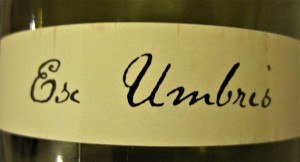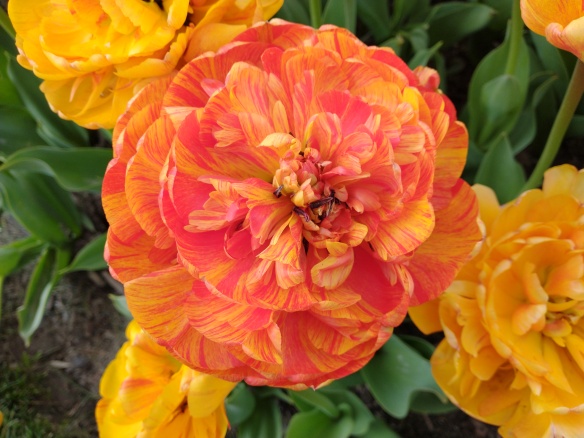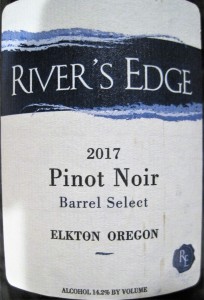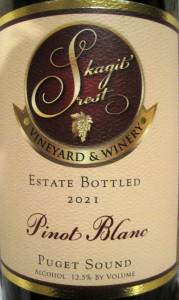Disclosure Statement: This post contains affiliate links. When you click on an affiliate link and make a purchase, I receive a commission at no additional cost to you. All opinions are my own.
Spoiled. Utterly spoiled to the hilt. That was my March 2023, and I am not complaining. I hit every single possible type of wine event last month – a wine festival, a tasting, a seminar, a wine club event, and an unforgettable, luxuriously indulgent multi-course wine and food pairing dinner, generously provided by my exceedingly gracious in-laws. That dinner was the Secret Supper Club at Barking Frog Restaurant, featuring Côte Bonneville wines.
About Barking Frog/Chef Dylan Herrick
Willows Lodge is a luxury hotel in the heart of Woodinville (WA) wine country (which boasts over 130 wineries!), and Barking Frog is its signature restaurant. Here is what makes Barking Frog special:
“Barking Frog is a culinary experience known for innovative seasonal menus, award-winning global wines and its signature ambiance. When you pair this with our exceptional service it is easy to see why it is one of the most widely desired restaurants on the eastside.
In collaboration with local farmers, food artisans and foragers, Executive Chef Dylan Herrick has built a talented culinary team that draws its mastery from modern and classic techniques, creating dishes that are inventive yet timeless.”
In addition, Barking Frog has received Wine Spectator’s Award of Excellence for five consecutive years. No bad wine here!
The Secret Supper Series is an opportunity for Chef Dylan Herrick to be creative and come up with some fantastic dishes that he pairs with the equally fantastic wines of a featured winemaker; in this case, Cote Bônneville Winemaker Kerry Shiels. The collaboration between a chef and winemaker is akin to a dancer and a musician working together – two diverse but essential elements needed to create a masterpiece. The congruity of the food and wine was outstanding. Mind and taste buds blown.
About Côte Bonneville Wines/Winemaker Kerry Shiels
Côte Bonneville is an estate winery located on world-renowned DuBrul Vineyard in Sunnyside, WA, in the Yakima Valley AVA. In 1991, Hugh and Kathy Shiels (parents of current winemaker Kerry Shiels) purchased some land and tore out the existing apple orchard. In 1992 they planted DuBrul Vineyard. According to their website, DuBrul Vineyard is “consistently recognized as one of the top vineyards in Washington State…. DuBrul Vineyard designated wines, from Côte Bonneville and others, have consistently been well received by critics and sought after by consumers world wide.” Grapes grown here have unique flavors and structure that put them in the class of ultra-premium wines. Côte Bonneville Winery was founded in 2001 to “produce classically styled wines that best express our particular site.” Learn more about DuBrul Vineyard and Côte Bonneville.
Kerry was great to talk to and learn from. A former engineer turned winemaker, she received her master’s degree in viticulture and enology from UC Davis. After gaining winemaking experience in California, Australia, and Argentina, she came home and got to work as head winemaker at Côte Bonneville in 2009. She brings exacting precision, immense knowledge, excellence, and the utmost care to her winemaking and her wines show it.
An interesting fact I learned about Kerry’s vineyard crew is that they are all women. This is unusual since over 75% of winery workers are male. She told me they tend to be “more nurturing and detail-oriented in the vineyard. They take great pride in helping grow some of the best grapes in the state!”
The Dinner
This was so much fun! There were only 9 of us guests total, 11 counting Kerry and Dylan. In my opinion, this is the perfect group size for an intimate evening, and being able to actually talk to each other and get to know each other proved very pleasant. It was also nice to be able to hear the discussions, and not be trying to shout above the din, like at a loud, crowded event. We were able to ask questions of Dylan and Kerry, and had great conversations. The service was impeccable so a big thank you to the team that served our group that evening.
Every wine I tried was pure loveliness and went beautifully with the food pairings. It was a flavor celebration from start to finish. I probably moaned, rolled my eyes, and made hand gestures a lot, but I can’t help it when I have amazing food and wine!
Here is the menu and my review of the meal. I am missing a description and photo for the starter, but it was super tasty. I did not photograph the wines, but I assure you I drank them (I think you can imagine what a glass of cab or chardonnay looks like)! 😉
Roes & Rosé
Cured Salmon/Trout Roe/Citrus Panna Cotta/Local Honey Espuma
2022 Côte Bonneville Rosé

Roes and Rose course, Barking Frog Woodinville Secret Supper, March 2023
The Rosé is made from Cabernet Franc grapes that are grown specifically for becoming Rosé wine, not for making Cab Franc wine or to be blended with other red grapes. Deep, beautiful fruit aromas, medium body, bright acidity. An intriguing wine and perfect pairing with the salmon and trout roe. Welcome spring!
Five-Spice Sakura Pork
Indian Curry-Spiced Romesco/Pomegranate/Arugula/Pineapple Kombucha Caramel
2019 Côte Bonneville Chardonnay
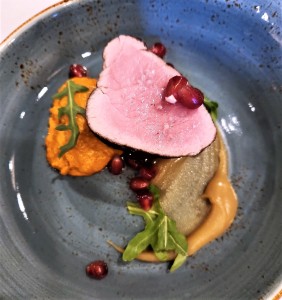
Five-Spice Sakura Pork course, Barking Frog Woodinville Secret Supper, March 2023
Holy cow (or should I say, holy swine). This was my favorite food of the night. I am going to have to get creative and re-create this flavor palette at home sometime. Classy, rich pairing with the chardonnay. Hats off to Chef Dylan on this one!
Roasted Wild Mushrooms
Currant/Chimacum Valley Chimatomme/Potato Glass/Toasted Rice Oil
2012 Côte Bonneville Cabernet Sauvignon

Roasted Wild Mushrooms course, Barking Frog Woodinville Secret Supper, March 2023
My absolute favorite wine of the night had to be the Cabernet Sauvignon. There were zero faults with this wine: it was smooth, full, rich, pure, balanced, complex, elegant – basically every positive adjective you can throw at a fine wine. Because it’s an epic $200 bottle of wine, it probably won’t make my acquaintance again for a while. I didn’t know the price of the wine until I looked it up afterwards, but I could definitely tell I was drinking something extremely special in a whole other league of wine. Brava, Kerry!
Intermezzo (a palate refresher between bites)

Intermezzo, Barking Frog Woodinville Secret Supper, March 2023
The Intermezzo was one of the more memorable things I’ve consumed in a long time. This is not a complete list, but it did include kiwi juice, pop rocks, basil seeds, foam, etc. It hit every last pleasant taste bud receptor on the tongue and every food texture sensation. Wow and yum! I can still taste it.
Whey-Braised Lamb Shoulder
Vanilla Scented Parsnip/Fennel Two Ways/Cocoa Nib Hummus/Yogurt Drizzle
2014 Côte Bonneville Syrah

Whey-Braised Lamb Shoulder course, Barking Frog Woodinville Secret Supper, March 2023
Another delicious dish with delicious wine. The lamb, with the cocoa, vanilla, and yogurt flavors played very well with the Syrah.
Lemon Pound Cake
Chamomile Noodles/Citrus Salad/Mandarin Caramel/Lemon Curd
2009 Côte Bonneville Late Harvest Riesling

Lemon Pound Cake course, Barking Frog Woodinville Secret Supper, March 2023
I am a chocolate lover so the dessert I could have easily passed on (and I’ll be honest, the look of the noodles was a bit off-putting), but the flavors did make for an excellent pairing with the Riesling. The Late Harvest Riesling reminded me of Tokaji (toe-kai), the famed Hungarian dessert wine. Just enchanting. ❤
News/In Sum
If you love wine (check) and food (check) and pairing the two (check), Barking Frog will soon be rolling out some new food and wine pairing menus, presumably featuring slightly smaller food portions similar to this multi-course dinner format. The aim is to present foods that will complement featured wines and deepen their enjoyment through pairing. I would love to go back again, if not for a winemaker dinner, then at least to try these new pairing menus. Keep tabs on their happenings here.
If you’d like to know more about Barking Frog’s Secret Supper Club, you can request an invitation by emailing barkingfrogevents@willowslodge.com. These events are not published on their website so you will need to be on their email list. Expect to spend approximately $285/person plus tax and gratuity.
Check out Côte Bonneville’s current releases – they can be shipped around the country. Information on their tasting room hours can be found here. You can also purchase their Carriage House Red Blend through my affiliate link at wine.com.
A tasting out at Côte Bonneville is a must on my spring or summer to-do list!
Special thanks to Rich and Dustin for snapping pics while I lived in the moment. 🙂
Share through the grapevine:


















